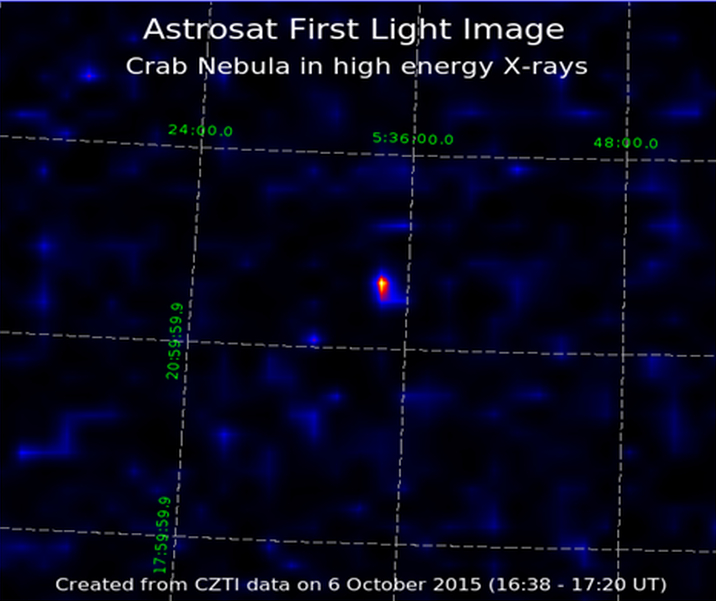
 Credit: ISRO
Credit: ISRO
Astrosat First Light
Astrosat, India's first space observatory, was launched on September 28, 2015. Since that time, the observatory has been carefully coming to life. The first instrument to get turned on was Astrosat's Charged Particle Monitor (CPM), an instrument designed to help detect and protect the observatory from times of high background of electrons and other charged particles. The next instrument to be turned on, on October 5, was the Cadmium Zinc Telluride Imager (CZTI), Astrosat's hard X-ray detector, which obtains pictures of the hard X-ray sky in the 10-150 keV band. To test that things were working as expected, on October 6, Astrosat was pointed at high-energy astrophysicists' favorite target, the Crab Nebula, the famous remnant of the supernova which was detected by Chinese astronomers in CE 1054. The image above is the first image to be obtained by the CZTI, and, by extension, the first astrophysical image to be obtained by Astrosat. The Crab is shown as the bright point near the center of the CZTI image. In about a month, all three of Astrosat's X-ray instruments (the CZTI, the LAXPC and the SXT) should be operational and returning astounding information about the X-ray Universe.
Published: October 19, 2015
<
HEA Dictionary ● Archive
● Search HEAPOW
● Other Languages
● HEAPOW on Facebook
● Download all Images
● Education ● HEAD
>

Each week the HEASARC
brings you new, exciting and beautiful images from X-ray and Gamma ray
astronomy. Check back each week and be sure to check out the HEAPOW archive!
Page Author: Dr. Michael F. Corcoran
Last modified Monday, 26-Feb-2024 17:44:34 EST


